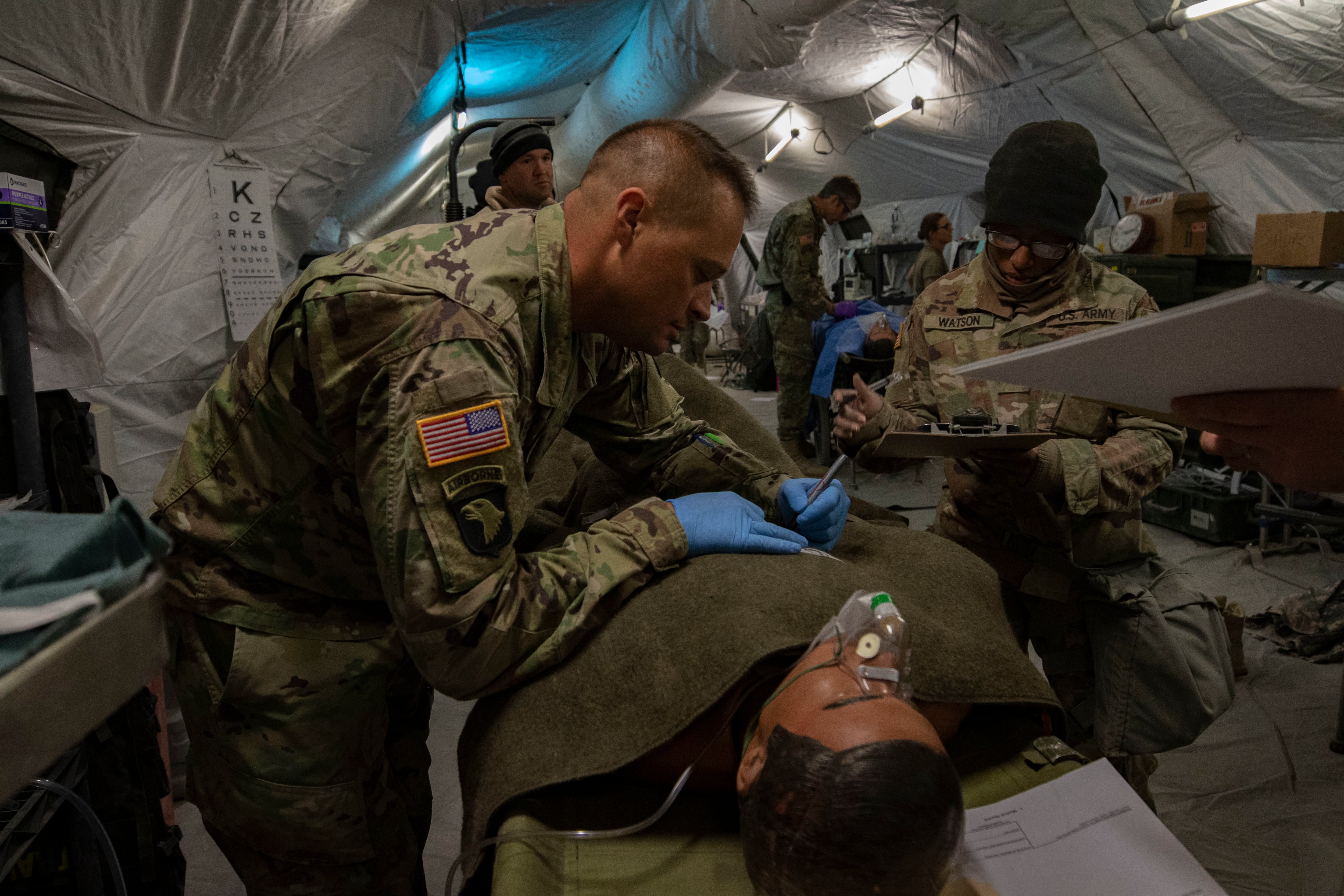ARLINGTON, Virginia – The Army is working on all kinds of ways to defeat, destroy and kill the enemy in what leaders believe will be the next fight — a large-scale ground combat operation with multi-domain implications.
But an even more vexing problem than defeating high-tech enemies is how to handle what most experts agree will be a number of casualties like the United States hasn’t seen since World War II.
At an Association of the U.S. Army forum held Tuesday, top leaders in the Army medical field laid out some of the challenges they’re facing.
“The future battlefield is one of isolation, without the ability to evacuate casualties or get resupply,” said Brig. Gen. Anthony McQueen, commanding general of the Army’s Medical Research and Development Command.
McQueen noted some key demands that need solutions, including more blood on the battlefield to treat higher numbers of wounded, more oxygen and perhaps more medically-trained soldiers to increase the “holding” capacity of keeping wounded in place as the force fights for safe evacuation options.
The goal is to use technologies and procedures to extend the “Golden Hour” — the vital time following injury to ensure survivability — to the “Golden Day,” McQueen said.
“Equipment must become smaller, lighter and more rugged,” he said. “And prolong life until the casualty can reach a higher level of care.”
RELATED

Maj. Gen. Joe Robinson, commanding general of 3rd Medical Command in the Army Reserve, detailed a “worst-case scenario.”
Imagine a mechanized combat infantry company 20 miles from their parent organization. They face a long-range precision fires attack. Out of the 120 soldiers on the ground, 25 are injured and deemed casualties.
The company has four combat medics and one senior medic overseeing immediate casualty response.
The senior medic notes that there have been five soldiers killed in action. Those are off the care list. He pulls in non-medics to assist with applying tourniquets. But in about 15 minutes, the medic’s aid bag is empty.
That medic had sent requests for more medical equipment two weeks ago, but unbeknownst to him, a cyber attack cut off communications and the command never saw it.
The medic drops a report to higher command, seeking more medics at the location.
But there’s been another attack already and no medics are available.

Does the senior medic stay on site to continue treating or move with the wounded to a higher level of care?
Back at the battalion aid station, a physician and physician assistant with a slim crew of medical soldiers are receiving dozens of critically wounded from that attack and others.
This is a situation not seen at this volume and speed in the lifetimes of nearly any soldier serving today.
This is just one example that Robinson and others speaking at the Tuesday forum noted will drive the Army medical community as it fights to keep its needs a part of the larger modernization push of the service.
There are promising signs.
Improvements in communications networks are allowing for telemedicine that would let a soldier with less training perform lifesaving procedures under the remote direction of a physician.
Some other militaries are using unmanned vehicles to transport wounded, as well. That’s something the Army is testing and experimenting with, too, according to McQueen.
But before the future fight commences, Robinson noted that recent events have helped leaders see how they’ll need to operate.
In the early days of the COVID-19 pandemic, in spring 2020, Robinson called over to find out what the medical personnel attrition was in Italy, which was ravaged by the virus for months.
He found out it was 15-20% attrition each month.
“You can’t compare that, we haven’t had that kind of loss rate in battle for years,” Robinson said.
The command got the equipment and training to Army medical staff.
“I really thought we were sending these people into a type of war, not a shooting war, but they could get an infection,” Robinson said.
In the first wave of deployments, the two-star said, only one soldier tested positive for COVID.
Todd South has written about crime, courts, government and the military for multiple publications since 2004 and was named a 2014 Pulitzer finalist for a co-written project on witness intimidation. Todd is a Marine veteran of the Iraq War.




